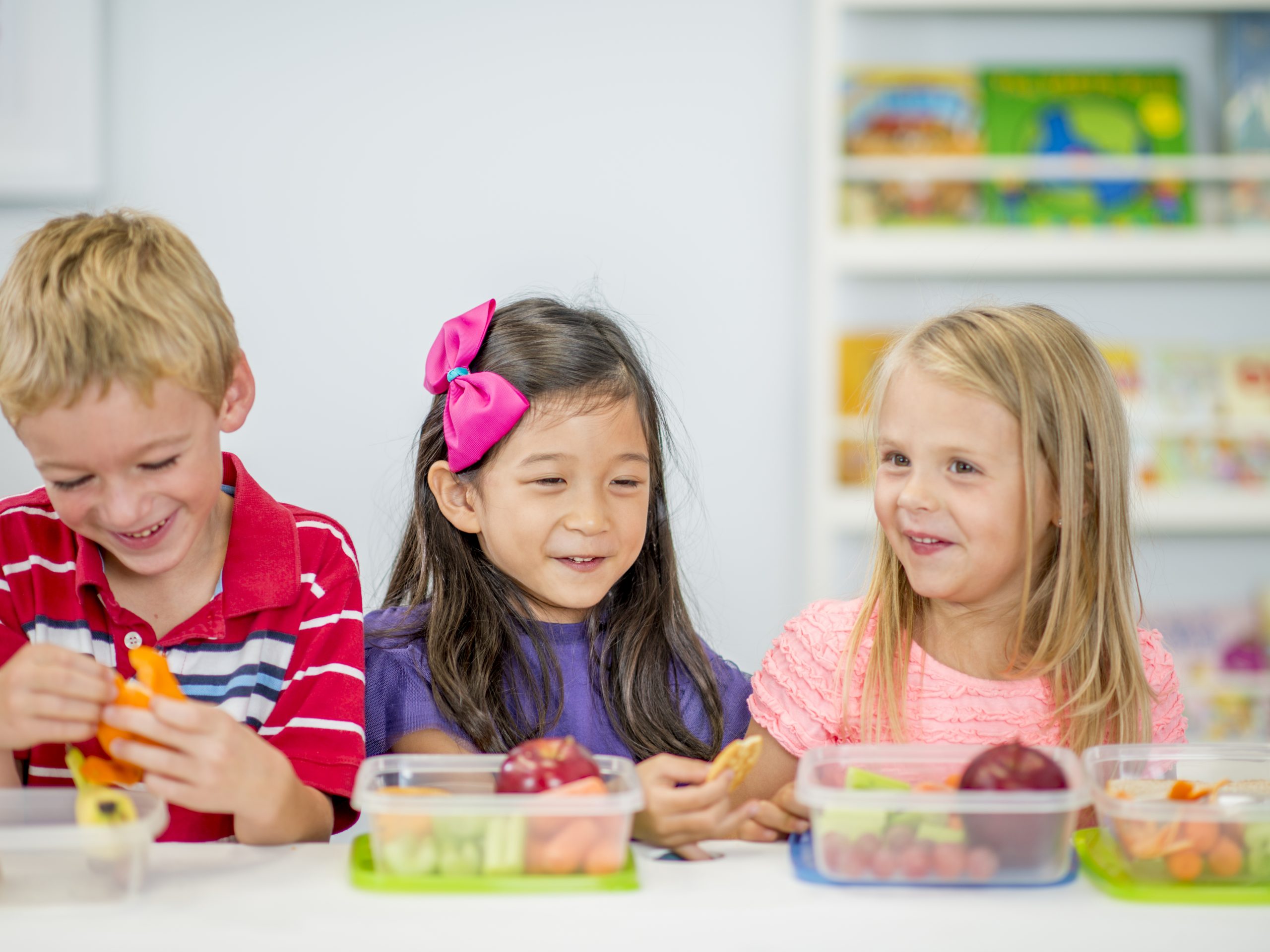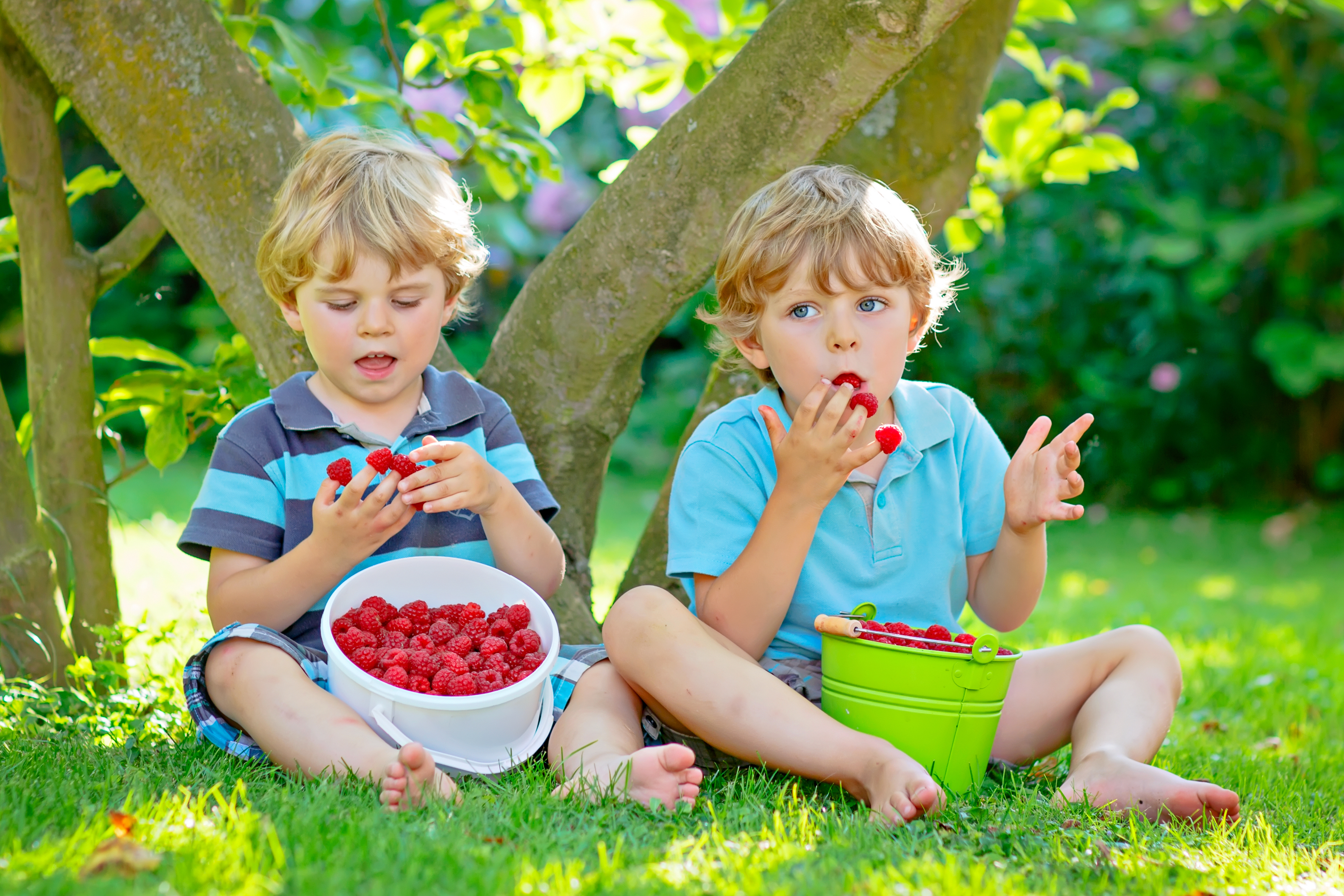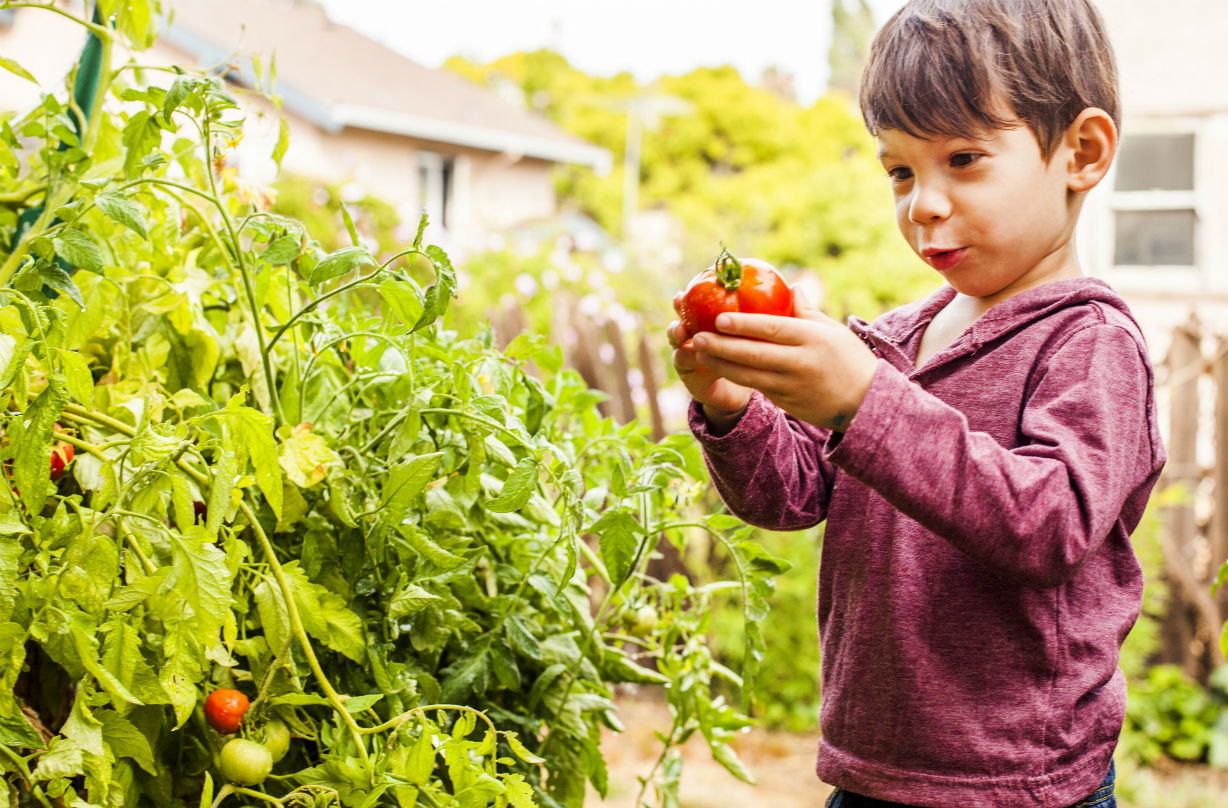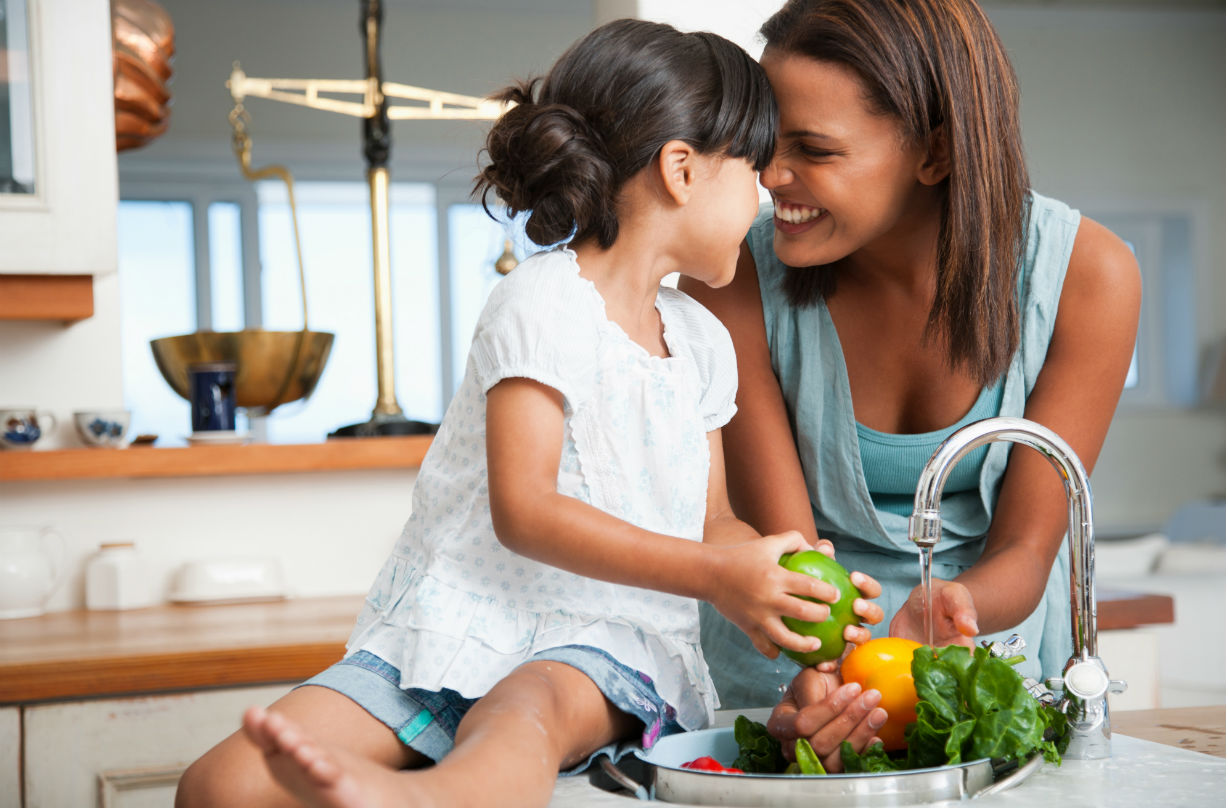How sensory-based food education method encourages kids to eat more fruit and veg
Sensory-based food eduction encourages kids to choose fruit and vegetables.

Encouraging young children to eat fruit and vegetables can sometimes prove to be rather tricky, but sensory-based food education may be the answer.
A recent study published in the journal Public Health Nutrition found that the method, known as 'Sapere', encourages kids aged three to five to eat more fruit and vegetables, which can feel like an impossible task for many parents.
During the study, researchers compared children in different nursery groups. Some kids were offered sensory-based food education, while others weren’t.
Children were then offered a buffet of different vegetables, berries and fruit to choose from, and the researchers took photos of their plates to analyse their willingness to choose and eat these foods.
The findings show those offered sensory-based food education were happier to try the healthier options.
What is sensory-based food education?
Sensory-based food education is a training concept for children and is based on using their five senses: sight, smell, hearing, taste, and touch.
It encourages children to use all five senses when eating and trying new foods, and uses a variety of methods to do so, such as using games, books, and physical activities. Children are therefore given an active role around food, and are encouraged to share their sensory experiences.
Parenting advice, hot topics, best buys and family finance tips delivered straight to your inbox.
The foods children begin to eat at a young age can help to predict what they might choose to enjoy later on in childhood and adulthood, which is why it is so important to start educating them as young as possible.
What is Sapere?
Sapere is a practical method, which enables children to discover their five senses, and then use this sensory awareness to explore the range of sensations offered by different foods and to better understand the importance of varied and healthy eating.
The method was developed by chemist Jaques Puisais in France 1974. The word sapere translates as ‘to taste, know, feel, to be brave’. Sapere has been used in many European countries such as Finland, Sweden, Denmark and Norway in the past two decades in nurseries and schools.

What are the benefits of sensory-based food education?
Brain development
Providing opportunities for your children to actively use their senses as they explore their world through ‘sensory play’ is crucial to their brain development as it helps to build nerve connections in the brain’s pathways.
Encourages children to make healthier choices later in life
According to the findings, children who are exposed to sensory-based food education around healthy foods like fruits and vegetables are more likely to want to eat those foods later in life, and therefore have a healthier and more nutritious diet.
Positive and personal food-related experiences gained in their nursery years can help modify dietary preferences in a direction that is beneficial for their health, because those learned in early childhood often stick with a person all the way to adolescence and adulthood.
Melanie Hargraves, a Nutrition Scientist for the British Nutrition Foundation, explains: ‘Eating a range of fruits and vegetables allows us to benefit from the different vitamins and minerals each contain, such as potassium from bananas, vitamin C from oranges and vitamin A from carrots. Encouraging children to explore and taste a range of different foods can help to lay the foundations of good eating which will help them as they grow.’
Children, even picky eaters, will be happier
Nutritionist Kaisa Kähkönen from the University of Eastern Finland, who was one of the researchers involved in the study, said one of the major benefits of sapere is the fact that it improves the atmosphere when children are eating at nursery.
‘An interesting finding is that the Sapere food education method seems to improve the eating atmosphere in kindergarten groups. This encouraged children who, according to their parents, were picky eaters, to choose a more diverse selection of vegetables, berries and fruit on their plate," Kähkönen explains.
This means that you may not experience tears and tantrums at the dinner table when you try and offer your little one some fruit as a healthy snack, instead of a chocolate biscuit.

How to practice sensory-based food education at home?
There are many ways parents can introduce sensory-based food education at home, it's all about getting your little ones involved.
'There are several different ways to do this. However, it always starts from sensory-based learning, child-orientation and child engagement. Doing and experiencing things together is also an important aspect,’ says Kähkönen.
Here's some great ways to encourage your children to use their five senses when it comes to food...
1) Show them how to grow their own food
A great way to get your child thinking about their food is to encourage them to grow their own vegetables in the garden or an outdoor area. This not only teaches them how to make their own food from an early age, but also educates children in how food is created and where it comes from.
If you're unable to provide a big enough space for growing vegetables, then you could do it on a smaller scale by showing them how to grow their own herbs in a small plant pot.

2) Include them in the kitchen
Next time you're whipping up a relatively simple meal in the kitchen, why not get your little one involved in the process? This could include getting them to do the most simplest of tasks such as stirring in the salad dressing or tearing up the lettuce leaves, but every little helps.
This is a great way to allow your kids to play with food away from the dinner table. Food play encourages children to interact with new foods in a non- threatening way with no expectations.
'Touching, smelling and tasting foods, including ‘messy play’ can help them to explore these foods, which may make them more likely to accept and eat the food,' Melanie says.
'Doing this at pre-school with other children helps as children watch and learn from those around them. Parents at home can re-create something similar with toddlers by encouraging them to look, touch, sniff and taste foods.'

3) Make an 'experience cookbook'
If you are willing to let your child help you in the kitchen, then why not encourage them to document their progress with a self-made 'experience cookbook'.
This will not only get them into the swing of talking about food, but will also help them feel happy and accomplished about what they have created in the kitchen and how they have helped you.
You could take pictures of their finished product and stick them in the book, or even get your child to draw pictures of what they have made. It's a great way for them to think about the whole cooking process which they can then look back on.
4) Eat together as a family
Model eating is also an important way to educate your children in food, so if possible try and sit around a table so that you can enjoy your meals altogether and even have a conversation about what you're all eating.
This is a great opportunity to talk about tastes, smells and textures with your children and to get an idea of what they like and what they don't like, and ensures that mealtimes are a relaxed occasion.

5) Create a reward chart
Instead of just verbally rewarding your child when they try a new food, you can try rewarding their efforts with something visual such as a gold sticker.
It's easy to reward your child after dinner with a chocolate desert or some sweets, but try to steer clear of rewarding food with food. Instead try and encourage them with a non-food reward, like stickers on a chart, as this is something they will look forward to adding to after dinner each day and can help to reinforce the good behaviour.
6) Read food related books
Next time you buy your child a new book, try and purchase one that is food related as, again, this is a great way to include food into your conversations with them.
Reading food-related books and even playing food-related games was very much encouraged by the researchers of the study.
Overall, sensory-based food education can definitely be beneficial to your child and it seems the younger they start, the better. So why not take advantage of another pair of hands in the kitchen, and start having some food-related fun with your little ones!
Words by Kirsty McCormack
Trusted, informative, and empathetic – GoodToKnow is the ultimate online destination for parents. At GoodtoKnow, our mission is 'simple': we're trying to make sense of parenthood. On the site, you'll find everything you need for a happy, healthy family life. Our huge archive of content includes more than 18,000 articles and 1,500 how-to videos. These include expert-backed advice features on parenting, dealing with relationship changes after having a baby, self-care for mums and managing your family finances. We also feature tried-and-tested product reviews and buying recommendations for every stage of family life - from prams and Moses baskets to birthday gifts and top toys.